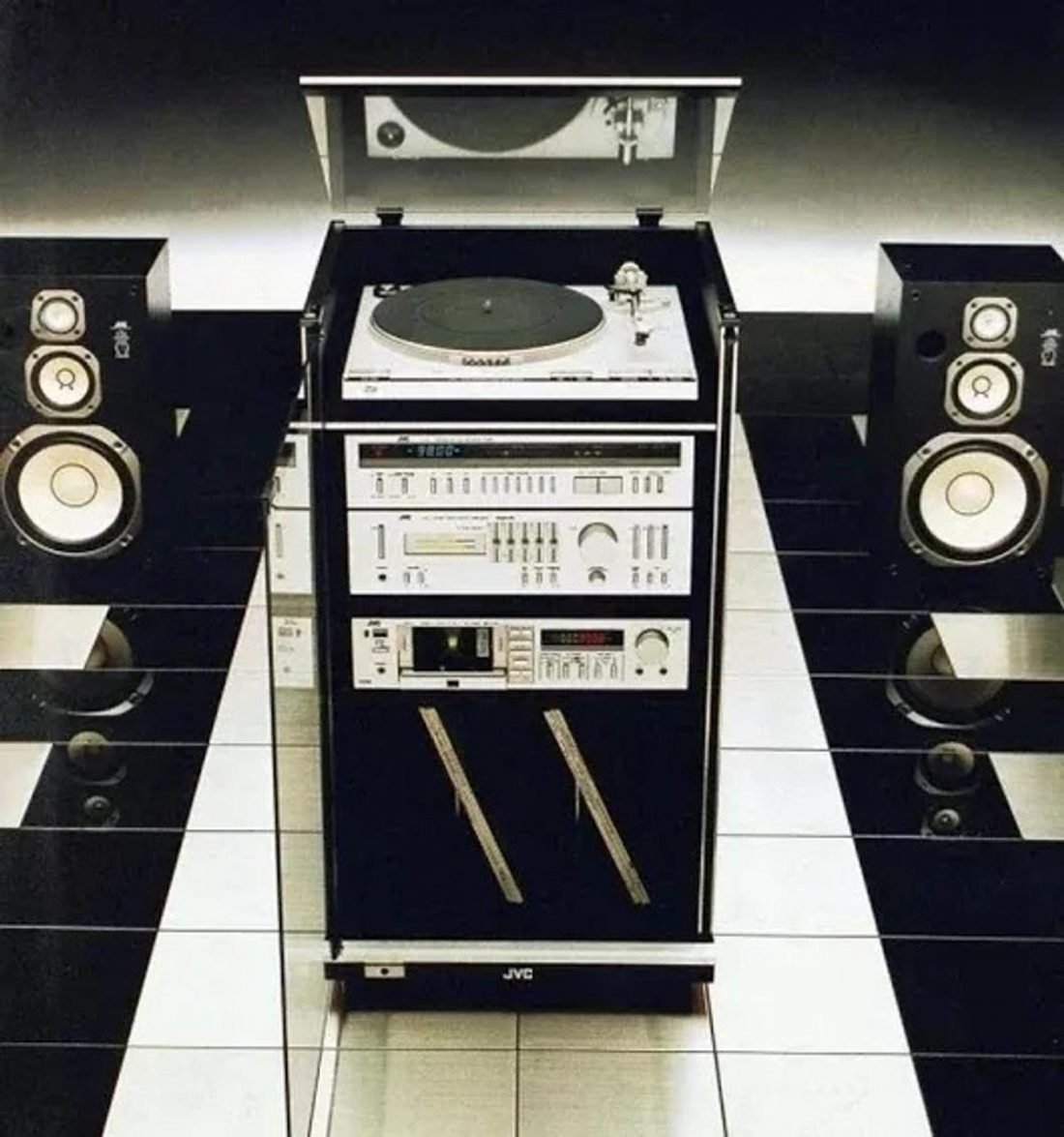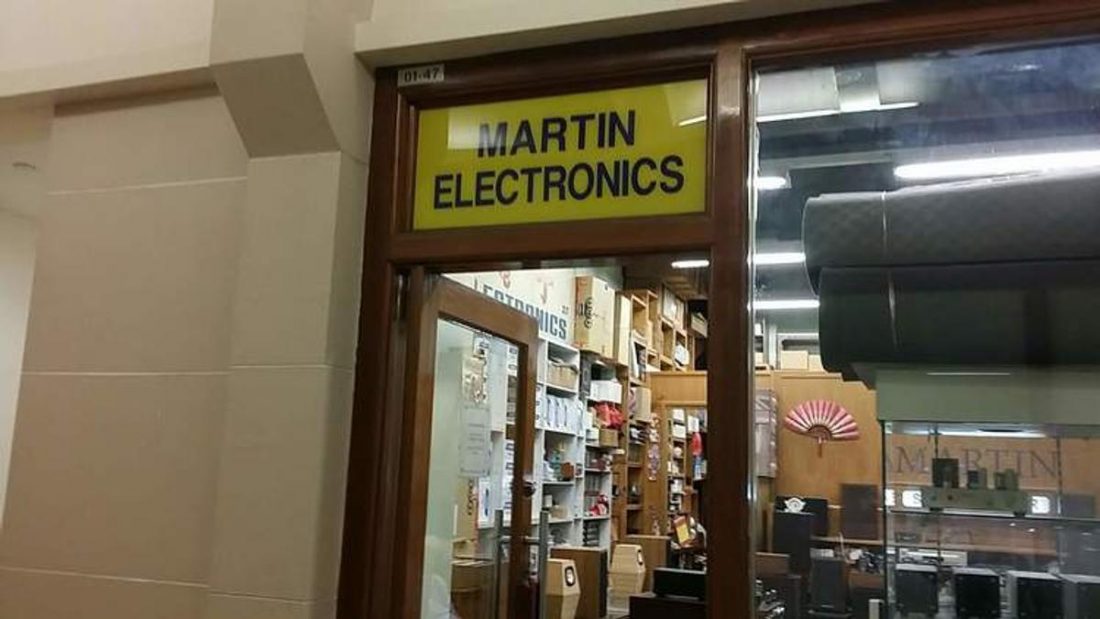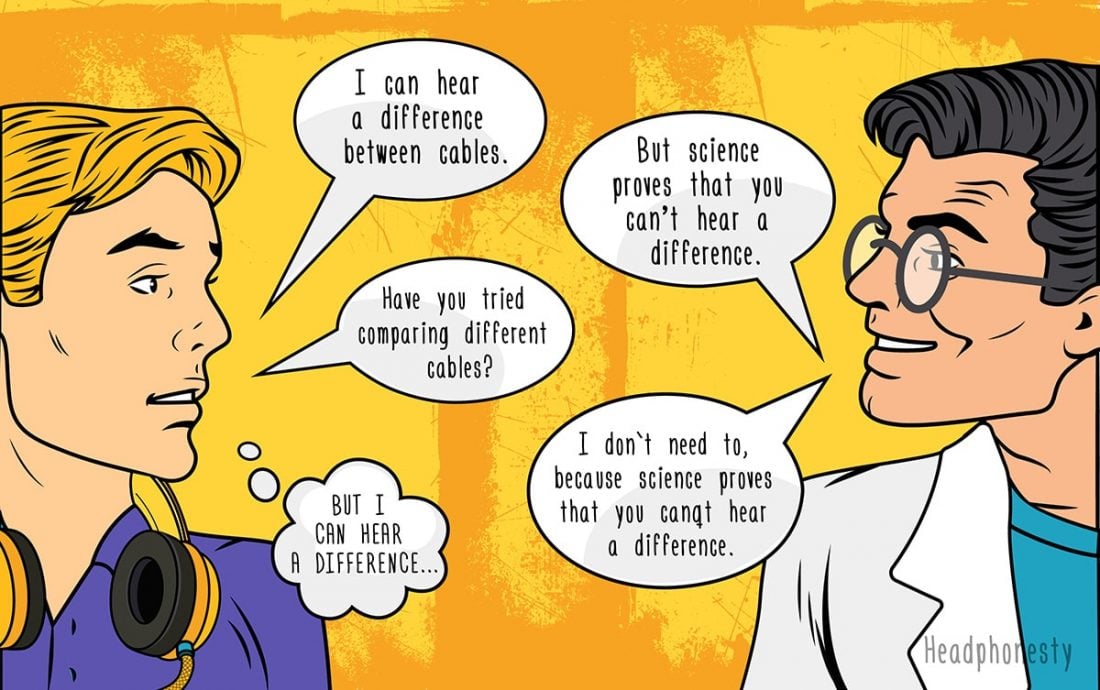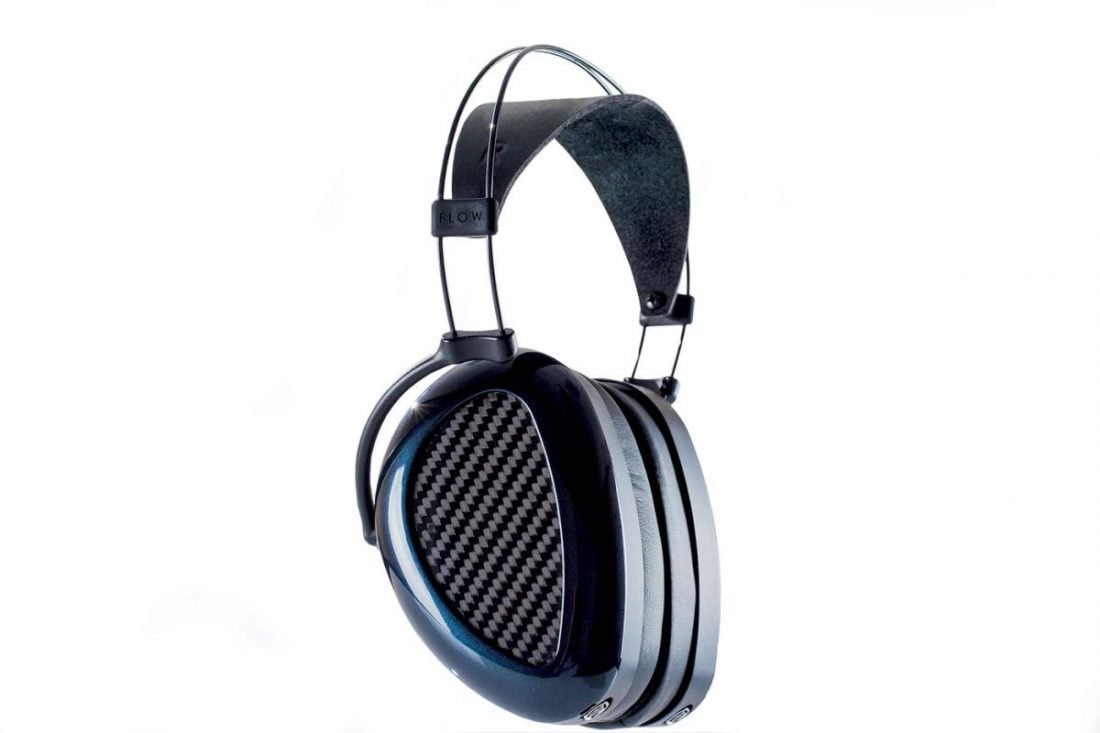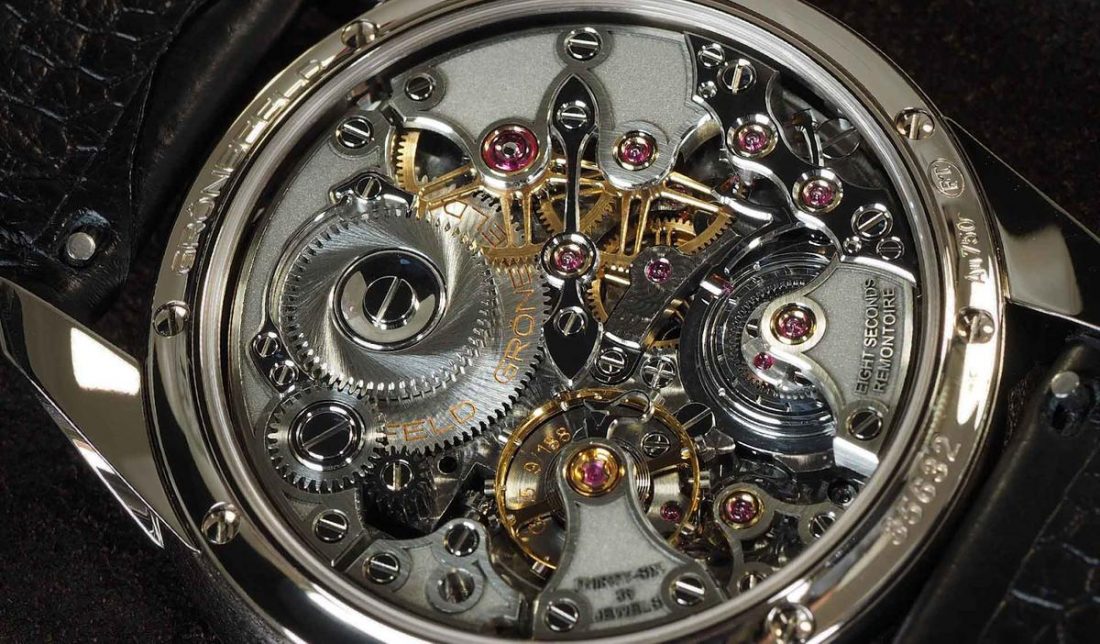Making sense of audiophilia and what it means to be an audiophile is easier said than done. Many schools of thought exist on almost any given aspect of audio, each supported by varying degrees of evidence. Like the crosstalk problem I outlined in my Harman curve articles, some cases even have compelling evidence both for and against. Trying to discern what makes for evidence is already tricky, let alone having to reconcile conflicting viewpoints. I write this article to make sense of my journey in audio. I hope that it will also help you reflect on your own experiences, and assist in navigating this bewildering world of audio reproduction, guided by these three virtues. This piece will begin with an anecdote from my life that I will use for illustration. You are unlikely to have the same experiences, but certain ideas within it might be familiar to you in some form. I will use my experience to investigate the usual debate in audio: the “objective” vs. “subjective” approach. We need to be honest about how these emotional responses can be created from sources other than the intrinsic sound output by the equipment. This combination of emotion and sound forms a multi-sensory experience that enhances the enjoyment of listening to music. It is a common fallacy to simplify the listening experience as purely the result of the audio chain’s sound output characteristics. Here is where my story comes in.
My Story
Enthusiast audio equipment has never been far from me, due to the influence of both my parents. When hired for a new job in the 1980s, my mother bought a Victor (now JVC) rack system. It was majestic: tape deck, turntable, tuner, and stereo receiver, reaching up to chest height. She would later throw it away, not knowing the renaissance that vintage Japanese-made stereos would see in the 2000s, attracting avid collectors. For me, the Japanese connection went deeper. My father worked in Japan in the 1970s, and spoke nostalgically of the Japanese economic miracle. In particular, how stereos became one important field of consumer electronics as the rising middle class sunk money into the electronics sector. Well-funded Japanese conglomerates like Sony and Pioneer possessed formidable R&D and manufacturing capabilities. Economies of scale meant gorgeous, well-built equipment for relatively cheap. To this day, I have a soft spot for vintage Japanese audio equipment due to my family connection. It’s the industrial design that makes them nostalgic collectibles (of a certain era), and they are wistfully looked back upon for good reason. Nowadays, some components literally cannot be built to the level they were originally, arguably at any price. Closer to home, three generations of my family have been visiting the same audio parts store. Run by a Mr and Mrs Vong, my grandfather would frequent it for miscellaneous electrical parts, like capacitors, for minor repairs. My father would later visit to get soundproofing and audio wiring for his car. Although he later fell out of love with car audio, he would still occasionally drop by the store just to chat with Mrs Vong, listening to her latest homebrew speakers and tube amps. She held (and still holds) the fort alone after her husband passed away. I accompanied him on occasion as a child. The Vongs made tube amps using the highly-regarded, Canadian-made Hammond transformers (which they distribute to this day), new-old-stock capacitors, and wood-trimmed enclosures. They sold their amps for little more than cost. Each of their creations were painstakingly hand-wired point-to-point, the preferred method of construction for high-end tube amplifiers. It was eye-opening to listen to their amplifiers and I reckon all that separates them from acclaimed boutique tube amplifiers is marketing and accessibility. My personal favourite was their EL34 integrated amplifier, using JJ Electronics EL34 tubes. Swapping between different EL34 tubes, I thought Electro-Harmonix was a tad too bright and thin, while Genelax Gold Lion seemed to lack detail. The JJs gave the sound an intoxicating sweetness and great rhythm, with a satisfying amount of detail. Mrs Vong is 85 years old now. Sometimes I walk past her store on my way elsewhere, only to see her working on an amplifier, a quiet oasis nestled within an old mall. Once space permits, I can see myself purchasing one of her EL34 integrateds for my room. The soft glow, gentle audio distortion, and charming sheet-metal-and-wood enclosures would make for a wonderfully relaxing experience. You might say that my soft spot for vintage Japanese amplification and hand-built tube amplifiers seems to go against the rational approach I have been advocating for in audiophilia. I tend to rely heavily on existing research, educated opinions by relevant experts, and conjectures that are consistent with what is known to understand audio reproduction. Yet, I think that there is space for both, and we need to move past the subjective-objective divide for that to materialise.
Moving Past ‘Objective’ and ‘Subjective’
For at least a decade, the central conflict in the audiophile community has been between the “objective” and “subjective” camps. The subjective camp is still the prevailing belief in audio. It advocates listening to the end result of the audio chain, and describing the perceived characteristics of the sound output, with an emphasis on comparing with certain mental images of what sound ought to be (e.g. of live music and real instruments), as well as visceral enjoyment.
The objective camp meanwhile, prioritises verifiably accurate sound reproduction, especially when it comes to audio electronics (which can be made to distort at levels below absolute worst-case human thresholds). A common misunderstanding of the objective approach by subjectivists is that it eliminates the human element of listening and in evaluating our emotional responses. To this, the objectivist counters that listening can still be performed, but for it to provide any meaningful insight requires certain experimental controls for meaningful conclusions. Broadly speaking, critical listening needs to be conducted under blind conditions, with certain experimental controls (most importantly, volume matching) to isolate listener biases from the actual sound output. Sound is, after all, a very well-defined physical phenomenon: it is simply moving air. There are two parts to moving past conflicting objective and subjective viewpoints:
Within ourselves
The subjective approach, while enjoyable, can conflict with empirical evidence. The common subjectivist approach is to disregard this evidence, or even claim that the sighted, or anecdotal listening conditions trump this evidence. I think this is a dangerous approach towards knowledge, not just in audio, but as a general principle, because it is fundamentally anti-intellectual. Meanwhile, the objective approach can treat audio equipment in purely utilitarian terms, just like one would analyze perhaps a toaster or fridge: merely the means to the end to reproduce a desired piece of music.
Visual influences on audio
One school of thought is that the listener enjoys the music, not the equipment, which ideally should be both sonically and visually unassuming. However, I argue that the equipment aesthetics can enhance enjoyment for some people. Properties of the equipment that do not affect the sound output can change how we perceive the sound, leading to a more pleasurable overall experience. It seems rather unfair for those who do experience this gain in pleasure to be forced into treating audio equipment on purely utilitarian terms. Do you find the term ‘romance’ an odd one to apply to audio components? Think about it. What is the backstory behind the piece of gear? Who are the people involved? What country was it made in? How does it look and feel? Many of us romanticise these things to some degree. For example, the Dan Clark Audio Aeon RT is a really good-sounding headphone. It is also well-engineered. For some, the fact that it is made in the US, using quality materials like carbon fibre and nickel-titanium alloy, as well as featuring a gorgeous deep blue gloss paint, enhances the listening experience. The issue for pure objectivists, is that these things are non-auditory attributes that do not have an effect on the sound output. Yet, they inevitably feed into and influence our perceptions of audio quality. This phenomenon has been consistently established across numerous instances of research (see here for an excellent literature review published in a peer-reviewed journal). We should embrace and enjoy this multi-sensory experience, but we need to keep in mind our three virtues of humility, self-awareness and integrity.
Humility in this context requires us to recognise: Staying humble opens us to self-awareness allows us to be aware and critical about where our enjoyment comes from. There are many distinct sources of enjoyment that are unrelated to the core function of the object (pure sound reproduction). Without breaking things down to smaller parts, it is too easy to misattribute the enjoyment one derives from these unrelated sources as all part of the intrinsic sonic “character” of an audio component. Practicing self-awareness, in this way, then allows us to be much more honest to ourselves and others. We do everyone a disservice if we stubbornly maintain that core function is improved by these unrelated factors even when it is not supported empirically, yet others ought to perceive as well. Non-auditory factors can be just as subjective as the music we enjoy through our equipment. Someone’s “classic” gear might seem “obsolete” to another. Descriptions by other people are at best a snapshot of someone’s interpretation of all the inputs to their different senses. Vivid descriptions may stimulate us to imagine what it was like for them, but we can easily interpret similar inputs differently when exposed. Even where there appears to be consensus over the attributes of certain equipment, the social element of audiophilia may be susceptible to in-group bias. Subconscious pressure to interpret multi-sensory inputs in a way palatable to the group we identify with and wish to belong to is extremely plausible. For instance, it is commonly claimed that certain audio electronics can affect the perceived spatial characteristics of sound. Yet, the broad principles and mechanisms of human spatial hearing are settled science. It stands to reason that these differences do not actually exist within the sound waves, but there is some other phenomenon that influences perception. It is inaccurate to refer to such differences as part of the sonic “character” of the equipment. It is also, arguably, wilfully ignorant of the multi-sensory nature of audiophilia that is intrinsic to the fact we use both our sight and touch to interact with our equipment. At this point, I should also point out that there are enthusiasts and communities that identify as moderates relying on verifiable measurements/evidence, but only as far as they rationalise their prevailing subjective listening impressions (sometimes in defiance to the research and evidence). Again, some even claim they can isolate any potential bias from their judgment just by thinking about it, or that certain properties of the sound output are so strong they overpower these biases. The weight of evidence is against that ability.
Between each other
Having framed our experiences the right way, how should we communicate with each other? Not everyone can run the sort of purely objective blind test outlined above. As we know, we must be careful to distinguish our experiences from empirical fact.
Class D amplification
Your multi-sensory experience shouldn’t be expressed purely as an actual property of the sound output. A famous example is with Class D amplification, which has commonly been maligned as sounding “cold”, “lifeless”, “flat”, “light”, and “analytical”. Compare this to Class A and AB amplifiers, which are much more frequently referred to with adjectives like “warm”, “holographic”, and “slam”. It seems like an extremely unlikely coincidence that: Class D amplifiers are vastly more efficient, cool-running, lightweight and can have a significantly more compact footprint than classic Class A/AB amplifiers. The latter are much less efficient, dissipate a significant amount of heat, often much heavier and much larger. See the resemblance? Admittedly, early Class D designs were known for having unpredictable treble anomalies with some setups, but this is a solved problem for any Class D design targeted at high-fidelity usage. This leaves an uncomfortable coincidence that its proponents cannot explain without understanding audiophilia as multi-sensory. So by all means, share your passion – just don’t confuse it with fact. Be excited about how every little thing, like the way your room looked, your mood, and your time of day all combined with those sound waves to give you that magical listening session! But just know that it isn’t a reliable indicator of the ability of the audio equipment to execute its core function. Even if a component provides enjoyment more frequently and consistently than another, this is down to the overall narrative the component represents, which may resonate more with you. The sound waves you hear are one of many components of this narrative: they do not entirely constitute it. Furthermore, even if there is consensus on your particular anecdotal experience with others, we must remember that this experience is as flawed and ungeneralizable as we are human. And if your experience is contradicted by empirical evidence about the sound output, please remember that such evidence is not, and cannot be disproven merely by anecdotal experience.
The Way Forward
I propose that the way forward requires us to rethink our relationship with both evidence about audio reproduction and with the non-auditory factors.
Rethinking our relationship with evidence
A common criticism is that the more you rely on measurements, the more you detract from the sense of adventure, discovery, personality, and humanity within the hobby. Some fear that if all we prioritize is the sound output, equipment will all start to sound and look similar, and it will be the end of individual customisation. I disagree. There is still much left for debate, some of which may never be settled, because there are factors that vary so much between individuals. We don’t have to look far for an example of this interplay between the objective and subjective in audio. In the loudspeaker world, there is growing appreciation for the importance of speaker dispersion. Facts indicate that smoother-dispersing speakers have numerous advantages. These advantages stem from how smooth dispersion interacts better with human hearing in general (ie. universal principles behind how we as a species process sound). However, within the paradigm of smoothly-dispersing loudspeakers (also known as “controlled directivity” loudspeakers), there is still vast room for you to make your choices based on your own preferences, listening habits, and placement constraints. A speaker with constant dispersion and one with tapering dispersion are both smooth, for example. You are just making your own choices for what satisfies you in a much more purposeful, informed and systematic manner. In fact, a rational, evidence-based approach towards audio embraces individuality, because it strives to identify the sources of individual variance and to devise solutions that account for it. More broadly speaking, identifying such principles often helps to catalyse genuine innovation in audiophile equipment. The most radical and effective designs in audio are often unconventional responses to a well-defined and significant problem, rather than the product of purely instinctive experimentation.
Rethinking our relationship with non-auditory factors
Let me end with another analogy: no one prefers mechanical watches for better time-keeping. We have smartphones and digital watches for that purpose. Enthusiasts love mechanical watches for the aesthetics, ergonomics, haptics, and sheer romance of having someone craft an object of intricate micro-mechanical art by hand. We audiophiles can take a page out of the watch enthusiast’s book. Although music should always come first, audiophilia is a hobby of gear collecting and fetishisation, just like watch enthusiasts enjoy. There is no shame in that. Perhaps audio equipment can and should be treated like these watches. I know I will greatly enjoy all the non-audio aspects when I get my EL34 amplifier from Mrs Vong. And I know I did when I bought a hand-built amplifier from a small Serbian family business, because it used high-end boutique parts it had no right to contain at its affordable price. The pride of ownership is real and it enhanced my experience, but I was under no delusion it fundamentally changed the sound output in the way that is frequently described. Hopefully this discussion will provoke you to be an audiophile with more integrity, humility and self-awareness. One that is able to distinguish between reality and perception, as well as between auditory and non-auditory factors, in whatever way your conscience compels.

